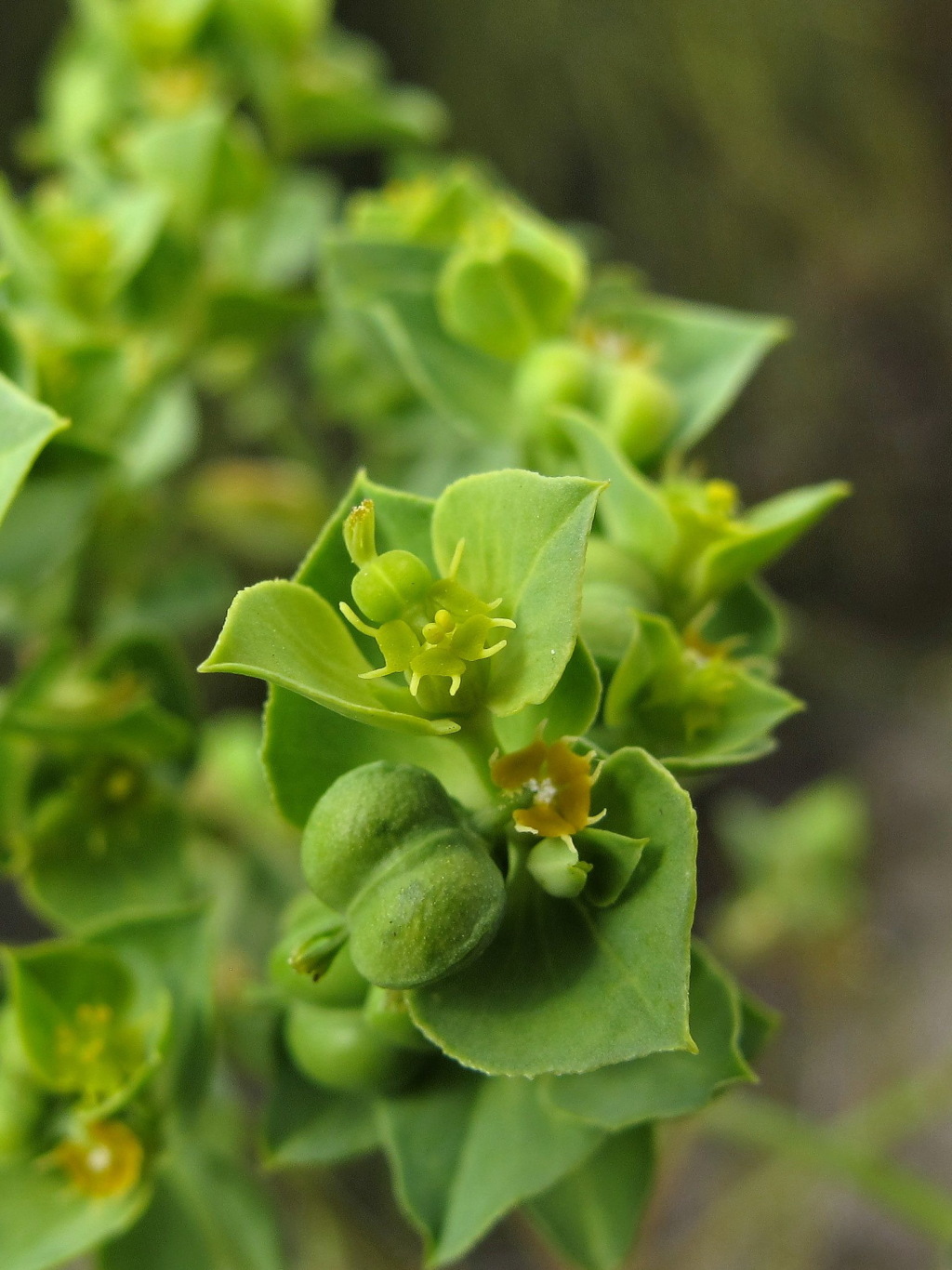Euphorbia terracina
L. Terracina SpurgeErect or ascending perennial 20–80 cm high, glabrous, woody at base; stems simple or branched from base, each with 3–5 terminal fertile branches which are further branched. Cauline leaves sessile, alternate, linear-lanceolate, 10–40 mm long, 2–8 mm wide, apex acute to obtuse, mucronate, base cuneate, margins entire or finely serrulate; leaves on fertile branches ovate to triangular, to 55 mm long, 30 mm wide. Cyathia 1 or 2 in uppermost axils or 2 or 3 terminally; peduncles to c. 1 mm long; involucre campanulate, c. 2 mm long; glands lunate to reniform, to c. 1.5 mm long, entire to slightly undulate, with 2 slender white horn-like appendages; female flowers with styles divided to the middle into 2 filiform stigmas. Capsule depressed-globose, 3–5 mm long, 4–5 mm wide, pendulous, keeled, smooth; seeds more or less globose, c. 2.5 mm diam., smooth, grey, sometimes dark-mottled, caruncle peltate, ovoid, keeled, white. Flowers Jul.–Oct.
MuM, Wim, GleP, VVP, MSB, RobP, OtP. Also naturalised WA, SA, NSW. Native to Europe. An occasional weed of disturbed sites on sandy soils, particularly of the far north-west.
Jeanes, J.A. (1999). Euphorbiaceae. In: Walsh, N.G.; Entwisle, T.J., Flora of Victoria Vol. 4, Cornaceae to Asteraceae, pp. 55–82. Inkata Press, Melbourne.
 Spinning
Spinning


